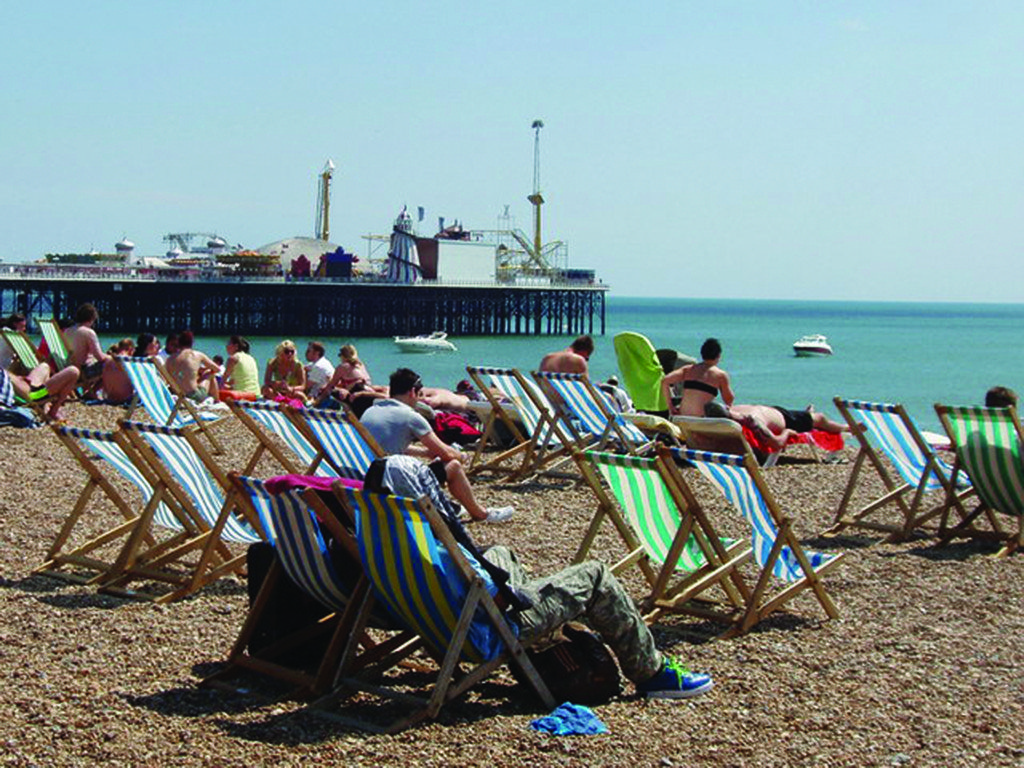 Summer is right around the corner, and families will spend more time outdoors. Exposure to the sun’s harmful ultraviolet (UV) rays increases the risk of skin cancer, which is why proper sun protection is essential. In fact, the sun’s UV rays are responsible for about 90 percent of nonmelanoma skin cancers and 86 percent of melanomas.
Summer is right around the corner, and families will spend more time outdoors. Exposure to the sun’s harmful ultraviolet (UV) rays increases the risk of skin cancer, which is why proper sun protection is essential. In fact, the sun’s UV rays are responsible for about 90 percent of nonmelanoma skin cancers and 86 percent of melanomas.
“Exposure to UV radiation is directly linked to all three forms of skin cancer,” said Perry Robins, MD, president of The Skin Cancer Foundation. “By adopting good sun safety habits families can enjoy summer outdoor activities without increasing their skin cancer risk.”
Here are some tips to help enjoy a sun-safe summer:
At the Beach
• Use a broad spectrum sunscreen daily. For extended outdoor activity, use a water-resistant broad spectrum (UVA/UVB) sunscreen with an SPF of 30 or higher. Reapply every two hours or after swimming or excessive sweating.
• Cover up with clothing. Look for high-UPF (Ultraviolet Protection Factor) swim shirts or rash guards and choose bathing suits that cover more skin, like one-piece suits and long trunks. Make sure to apply and reapply sunscreen to exposed areas of the skin not covered by fabric. To help avoid missing spots, apply sunscreen before putting on your bathing suit. When shopping for high-UPF clothing, look for The Skin Cancer Foundation’s Seal of Recommendation.
• Avoid tanning. There is no such thing as a safe tan, because tanning itself is caused by DNA damage to the skin. In addition to increasing skin cancer risk, tanning also leads to premature skin aging, including wrinkles, leathery skin and age spots.
 At Summer Camp
At Summer Camp
• Remind kids to seek the shade. Advise kids to play in shaded areas to limit UV exposure. Check with counselors to see if there are adequate places for campers to seek shade during outdoor activities taking place between 10 a.m. and 4 p.m., when UV rays are most intense.
• Dress kids in sun-protective clothing. For optimal protection from the sun, send kids to camp in sun-protective clothing. Look for tightly woven or knit, dark- or bright- colored fabrics, that offer the best protection. Don’t forget wide-brimmed hats and wraparound UV-blocking sunglasses.
• Practice sunscreen application beforehand. Teach children to apply 1 ounce (2 tablespoons, or about the size of a golf ball) of sunscreen to all exposed areas 30 minutes before outdoor activities. Remind them to cover easily missed areas such as the back of the neck and tops of the ears. If camp rules allow, ask counselors to help children reapply sunscreen every two hours, or after swimming or excessive sweating.
 On the Road
On the Road
• Treat your vehicle to window film. Car windows don’t provide complete sun protection. Though UVB radiation is effectively blocked by glass, more than 60 percent of UVA radiation can pass through windows. UV-protective film, also known as window film, blocks out up to 99.9 percent of UV radiation. If you have window film installed, remember that it protects you only when the windows are closed. When shopping for window film, check to see if the product has The Skin Cancer Foundation’s Seal of Recommendation.
• Drivers beware. Nearly 53 percent of skin cancers in the US occur on the left, or drivers’ side of the body. Don’t forget to apply sunscreen, particularly when spending extended time in a car that has no window film.
Additional Tips
• Do not burn. At any age, a person’s risk for melanoma doubles if he or she has ever had five or more sunburns.
• Keep newborns out of the sun. Sunscreen should be used on babies over the age of six months.
Emily Prager writes for The Skin Cancer Foundation.



























